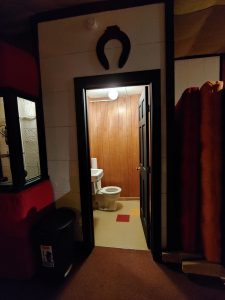After another successful stay in New Orleans, we were off to Alabama. Our initial plan was to go to Birmingham to see some sights, have dinner with an old shipmate, then visit some music studios in Muscle Shoals and scurry up to Nashville.
We found a nice campground just south of Birmingham, nearby Oak Mountain State Park had abundant trails and was a great place for a morning dog walk around Tranquility Lake. We discovered the Sloss Furnaces National Historic Landmark, a blast furnace plant where iron was made from 1882–1971. We had no idea that Birmingham was the Iron Capital of the South. It was pretty cool to be able to wander around unsupervised in such an interesting industrial complex.
Then our visit downtown, little did we know how much this city would change our level of awareness on the Civil Rights movement in America. In Birmingham, we visited the Civil Rights Institute which is right across the street from the 16th Street Baptist Church, the site of the bombing in September 1963 that killed 4 young girls. The Institute captures the struggles & triumphs of the civil rights movement chronicled in a dramatic, multimedia museum. While there, we quickly realized that we wanted to visit the other significant locations that pertained to the Civil Rights Movement.
We altered our schedule so we could go to Selma and Montgomery. Maxwell AFB had a nice little FAMCAMP which gave us the perfect place to visit the surrounding area.
We discovered that Hank Williams, a Montgomery native, was buried here. We also had no idea that his meteoric career only lasted about five years and that his stardom was riddled with alcohol and substance abuse. After their epic flight on the Carolina Outer Banks, the Wright Brothers had a flying school here that was short lived and eventually became the Air Force Base!
On a bright crisp spring morning we drove to Selma along the same route that Martin Luther King, after two bloody unsuccessful attempts, led hundreds on a peaceful march to Montgomery.(Only with the assistance of the Alabama National Guard) Our arrival in Selma was driving across the Edmund Pettus Bridge, the site of the 1965 Bloody Sunday conflict is a national landmark honoring the civil rights movement. The Brown Chapel (A. M. E. Church) was the starting point where Martin Luther King led the march to Montgomery on March 21, 1965. We were fortunate to meet the pastor and get a quick tour of this iconic chapel.
This Sunday morning visit meant many of the Museums and Interpretive Centers were closed. We meandered through town, finding many churches, beautiful homes and a cemetery that was full of old oak trees draped with Spanish moss.
Back in Montgomery we were at the historic Court Square Fountain. It is said that this part of downtown was the slave warehousing capital of the south. On one side of the fountain circle, was the Rosa Parks Bus Stop location where on December 1, 1955, she refused to give up her seat on the bus. This event triggered the bus boycott which lasted over a year until integration for public transportation was ordered by the Supreme Court.
On the other side of the circle, is the Winter building where LeRoy Pope Walker, the Confederate States Secretary of War, sent a telegram to General P. G. T. Beauregard to advise him to fire on Fort Sumter, and thus start the American Civil War. So many layers of American history in one small city block.
The Legacy Museum in Montgomery displays the history of slavery and racism in America. This includes the enslavement of African-Americans, racial lynchings, segregation, and racial bias. A very somber morning. Due to the nature of the content, Photography was NOT allowed
After lunch and a short drive, we arrived at the National Memorial for Peace and Justice which opened to the public on April 26, 2018. It is the nation’s first memorial dedicated to the legacy of enslaved black people, people terrorized by lynching, African Americans humiliated by racial segregation and Jim Crow, and people of color burdened with contemporary presumptions of guilt and police violence. Its hard to imagine that there were more than 4300 documented lynchings of African Americans between 1877 and 1950 concentrated in 12 Southern states, and some lynching terrorism went on into the early 60s. Today, several other states are now included in the research conducted by the Equal Justice Initiative. The monument is the first major work in the nation to name and honor these victims.
After being immersed in the history of the horrors of racial inequalities (then & now) and the Civil Rights movement for nearly a week Deb and I headed north to a music studio mecca – Muscle Shoals Alabama.
Here, Fame Studio and Muscle Shoals Sound Studio were made famous by Rick Hall and the “Swampers”, a group of American studio musicians playing soul, R&B, rock and roll and country. They have appeared on more than 500 recordings, including 75 gold and platinum hits. Being able to sit at the piano where Paul Simon’s “Kodachrome” was played, and see the bath room where Mick Jagger sang “Wild Horses” was quite an experience. After the morning tours we were on our way to Nashville, Tennessee.











































Leave a Reply